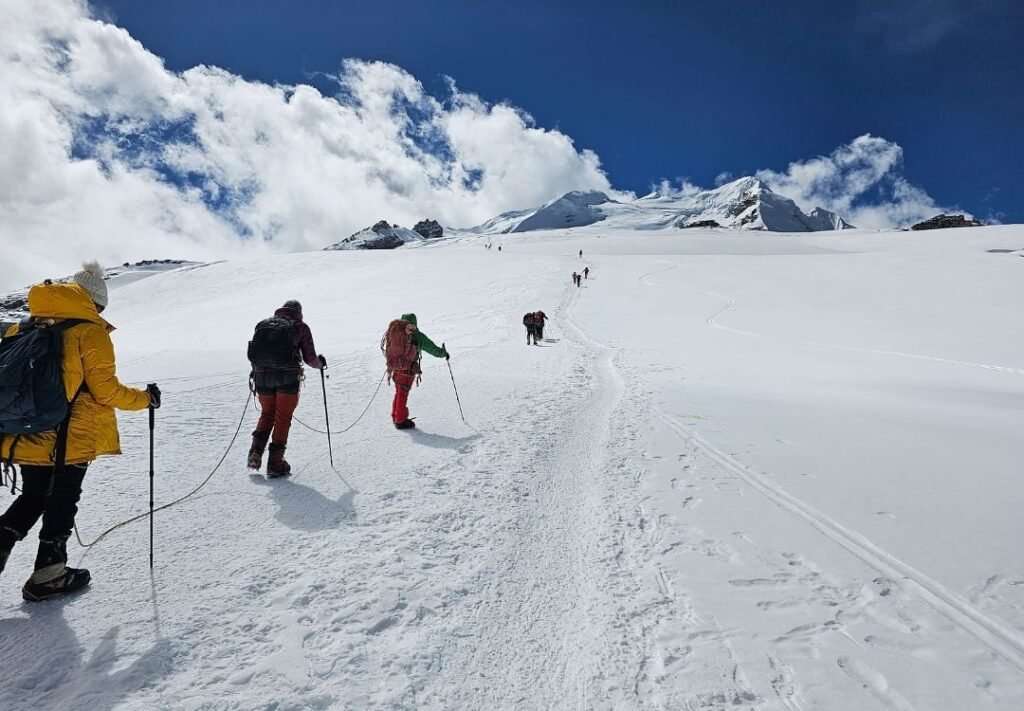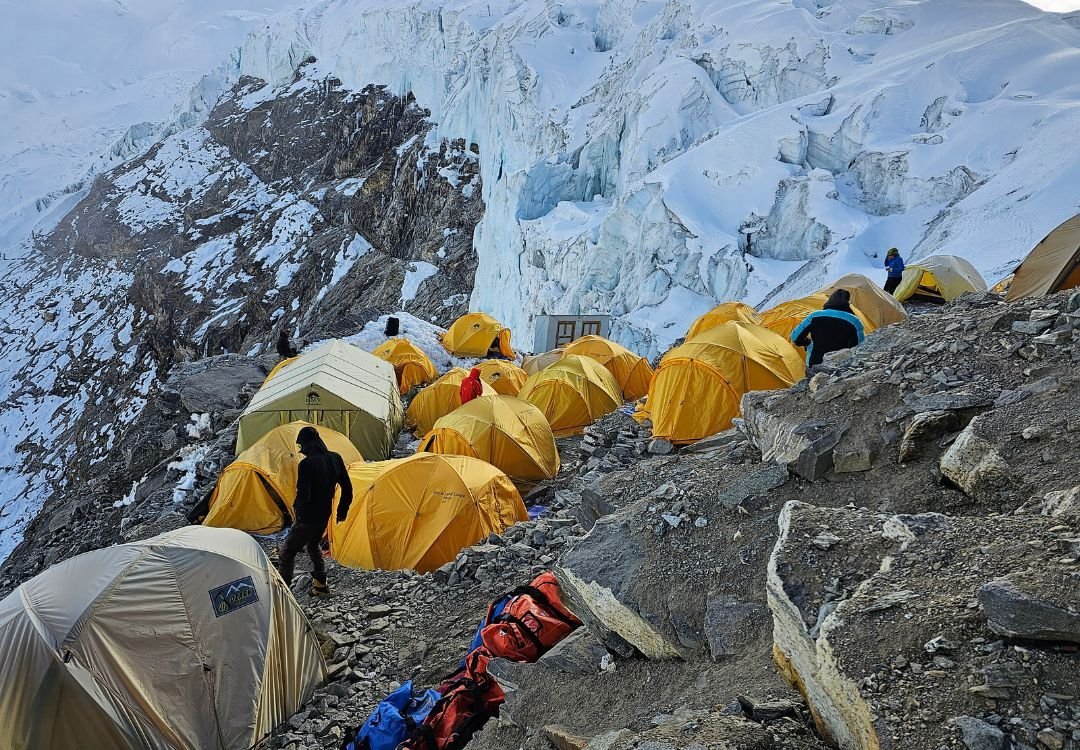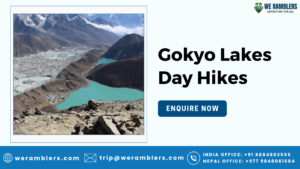Rescue During Mera Peak Climb: Climbing with Caution
The Mera Peak Climb is often hailed as one of the most stunning trekking peaks in the Nepal Himalayas, offering sweeping views of Everest, Lhotse, Makalu, Cho Oyu, and Kanchenjunga. At 6,476 meters, it stands as the highest trekking peak in the country, attracting ambitious trekkers from around the globe. However, the climb is not just about ice axes and summit photos; it’s about dealing with the reality of altitude, harsh environments, and limited rescue options in one of the most remote regions of the Khumbu.
Though considered non-technical by Himalayan climbing standards, the altitude, isolation, and terrain make rescue during Mera Peak Climb a critical safety consideration. Every year, a number of climbers suffer from altitude-related illness, exhaustion, or sudden injuries that require immediate evacuation. When that happens, timely coordination, professional guidance, and access to emergency air evacuation can mean the difference between recovery and catastrophe.
Recognizing the Risks: What Can Go Wrong on Mera Peak
Mera Peak is challenging not just because of its elevation, but because of the rapid altitude gain over a relatively short trekking period. Climbers often underestimate how their bodies will respond at 5,000 meters and beyond, and it’s in these upper reaches that emergencies frequently arise.
One of the most common problems trekkers face is Acute Mountain Sickness (AMS). This can start with mild symptoms like headaches, nausea, and fatigue, but can escalate quickly into life-threatening conditions like High Altitude Pulmonary Edema (HAPE) or High Altitude Cerebral Edema (HACE). If left untreated, these conditions require immediate descent or evacuation by air.
Injuries are another concern. The route includes steep ascents over scree, ice, and snow, where falls can lead to sprained ankles, fractured limbs, or bruising. The ascent from Mera La to High Camp is particularly exposed and icy, increasing the chance of slips. Even a minor fall here can require a rescue from Mera Peak Region, given the lack of roads or ground transportation.
Weather is also a wild card. Rapid shifts can bring snowstorms, whiteouts, and bone-chilling winds. Hypothermia and frostbite are real threats, especially during summit attempts, which begin in the freezing pre-dawn hours. In such conditions, waiting for help on foot can be fatal, reinforcing the importance of a swift emergency evac service in Mera Peak Region.
How Helicopter Rescue Works on Mera Peak
When evacuation is the only option, helicopters become lifelines. A helicopter rescue from Mera Peak Climb is typically initiated by the trekker’s guide, who monitors each client’s health daily and can identify signs of distress early. Once the decision is made to evacuate, speed and coordination are essential.
Due to the region’s remoteness, communication is usually established via satellite phones or high-frequency radios, especially in areas beyond Lukla where cell reception is unavailable. The operations team in Kathmandu works in real time with helicopter operators and weather stations to determine flight feasibility. Once air clearance is granted, helicopters are dispatched from Kathmandu or Lukla.
The most common pickup points for evacuation are Khare (5,000m) and Thangnak (4,300m), though in serious emergencies, extraction may take place near Mera La or even Mera High Camp, depending on landing conditions. Once airborne, the flight typically lasts about an hour to reach Kathmandu, where trekkers are taken to specialized hospitals like CIWEC or Norvic for treatment.
The Helicopter Rescue from Mera Peak Package includes not only the flight but also pre-coordination, on-ground support, and hospital handoff. In emergency scenarios, every second matters, and our ability to act fast can save lives.
Cost of Rescue During Mera Peak Climb: Why Insurance is Not Optional
The financial implications of a Mera Peak Rescue are considerable, and they often catch trekkers off guard. A single helicopter evacuation can cost between $4,000 to $6,000 USD, depending on weather conditions, landing altitude, and flight duration. Additional medical expenses in Kathmandu, such as tests, overnight stays, and repatriation, add further costs.
This is why travel insurance for Mera Peak Rescue is mandatory for all We Ramblers participants. The insurance must specifically cover high-altitude trekking and helicopter evacuation up to 6,500 meters. Many policies exclude mountaineering activities or place altitude caps too low for Mera Peak, so trekkers must carefully read their coverage details before arrival.
If evacuation is required, the guide prepares a detailed medical report, and all helicopter invoices and documentation are provided to the client. These are essential for making an insurance claim. Without proper insurance, trekkers must pay for the Mera Peak Rescue Cost out of pocket before boarding the helicopter.
We assist clients with paperwork and provide guidance for filing claims post-rescue. However, prevention is the best solution. Proper insurance coverage not only protects your health but also your finances during this remote adventure.

What Happens During a Rescue from Mera Peak Region
When an emergency strikes, the field team first stabilizes the trekker using oxygen, fluids, and first-aid care. Simultaneously, the guide contacts our Kathmandu office, relaying the individual’s vitals and suspected condition. Based on this, our coordination team determines the type of evacuation required and contacts the insurance company to validate the policy.
Once the insurance approval is in place, we request a helicopter from an authorized operator. Simultaneously, our staff begins preparing the hospital for the patient’s arrival, notifying the emergency medical team and sharing trekker health information to minimize delays in treatment.
Because Mera Peak Trekking Evacuation often takes place in remote, snowy terrain, helicopters can only land at designated flat areas, usually below 5,500 meters. In some situations, the patient may need to descend slightly with guide assistance to reach a viable pickup site. Once aboard, they are immediately flown to Kathmandu, where medical intervention begins upon landing.
We handle all logistics, from documentation to translation services, ensuring a smooth transition from mountain to medical care.
Working with Authorities and Locals for Seamless Rescue Operations
No rescue is ever a solo operation. It requires collaboration between multiple parties, all of whom are crucial in ensuring safe, legal, and timely extractions from the mountains.
We coordinate with TAAN (Trekking Agencies’ Association of Nepal), which oversees documentation and permit validation. Their involvement ensures that all rescue operations are officially logged and that no unauthorized flights are permitted in restricted areas.
Local police and army posts, especially those stationed in Lukla, Pangom, or Khote, are also informed of evacuation plans. They help manage air traffic safety and verify the identity of the evacuee.
On-ground guides and porters serve as the immediate response team, assisting with carrying, warming, and caring for the patient before extraction. We also work closely with helicopter operators to avoid weather-related cancellations and ensure that backup plans are in place when conditions change rapidly.
This multilayered system of coordination ensures that a rescue from Mera Peak Region is executed with speed, compliance, and care.
How to Minimize the Risk of Rescue
While our rescue protocols are robust, we believe the best rescue is the one you never need. Prevention starts long before you reach Nepal; it begins with mindset, training, and preparation.
Acclimatization is key. Our itineraries are designed to allow gradual altitude gain, with multiple rest days in Thangnak and Khare, where trekkers can recover and adapt. Drinking at least 3–4 liters of water per day, maintaining calorie intake, and monitoring your vitals are equally essential.
Physical training plays a role as well. We advise all Mera Peak climbers to engage in endurance, strength, and cardiovascular training at least 6–8 weeks before the trek. It helps the body cope better with physical stress at high altitudes.
Perhaps most importantly, trekkers should be honest about how they’re feeling. Report headaches, nausea, or unusual fatigue as early as possible. Our guides are trained to recognize these symptoms, but your voice matters most in preventing escalation.
Being well-informed, well-prepared, and well-guided can eliminate the need for a Mera Peak Trekking Evacuation altogether.
FAQs About Rescue During Mera Peak Climb
How quickly can a helicopter reach me if I need a rescue?
Helicopters can typically reach you within 2–3 hours after confirmation, depending on location and weather. Response is fastest from Khare or Thangnak.
Can a helicopter land at Mera Peak’s summit?
No. Helicopter landings above 5,500 meters are highly risky. Most pickups occur from lower camps like Khare.
What if my insurance doesn’t cover helicopter evacuation?
You will need to pay the cost upfront—around $4,000–$6,000 USD. We’ll assist with receipts and claims, but the payment must be made immediately.
Is the rescue service included in my trek package?
The Helicopter Rescue from Mera Peak Package is not included in your trek fee. However, coordination support is fully handled by We Ramblers.
Can I get a refund if I’m evacuated and miss the summit?
We do not offer refunds for early exit due to medical issues. However, your insurance may cover trip interruption expenses.
Trek Boldly, But Trek Safely with We Ramblers
Climbing Mera Peak is a journey of discovery, courage, and resilience. But safety must always come first. The harsh beauty of the Himalayas demands respect, and that means planning not just for the best, but preparing for the worst.
At We Ramblers, we bring unmatched expertise, real-world rescue experience, and 24/7 support into every trek. Whether it’s altitude sickness, a freak weather event, or a need for Helicopter rescue during Mera Peak Climb, we are always ready to act.
With the right training, a solid team, and a rescue plan in place, you can focus on what matters most: conquering the summit and creating unforgettable memories. Contact us today for full details.





